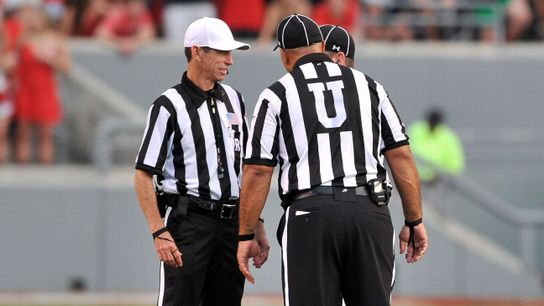The NCAA has issued a couple "interpretations" on the targeting rule, by way of South Dakota head coach Bob Nielson and NCAA officiating czar Rogers Redding.
The first is that the crown of the helmet is not defined as just the top of the head, but instead everything above the facemask. "It seems that some officials have been interpreting the crown of the helmet to mean the tip-top portion of the helmet only," Redding said. "We want everyone to understand that the crown of the helmet starts from the area above the facemask to the dome of the helmet."
The second didn't seem as much of an interpretation as a reminder:
In the second interpretation, instant replay officials have been issued guidance. Last spring, the NCAA Playing Rules Oversight Committee approved a new rule proposed by the NCAA Football Rules Committee that gives instant replay officials the opportunity to stop the game to determine if an egregious targeting foul was missed by the on-field officials.
For example, when no targeting foul is called on the field, the instant replay official can stop the game to call a foul if the hit was so clear and obvious that it would have been confirmed had it been flagged.
“There have been some instances where this rule could’ve been applied for targeting fouls,” Redding said. “We want to provide more guidance so that this rule is applied more consistently.”
Essentially, expect to see more games stopped due to the eye in the sky calling targeting fouls that the stripes on the field did not see.
Now if only those in power could give us a clear definition of what a catch actually is.
